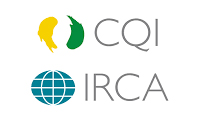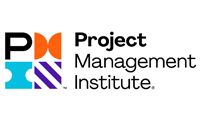In recent years, Saudi Arabia has made significant strides in enhancing its commitment to safety training, setting a benchmark for other countries in the region. As the region’s leading hub for business and commerce, Dubai, UAE, stands as a shining example of Saudi Arabia’s dedication to ensuring safety in the workplace and beyond. This blog post will delve into the key aspects of Saudi Arabia’s commitment to safety training and why it’s essential for businesses operating in Dubai, UAE, to take note of these developments.
1. Regulatory Framework
Saudi Arabia has been diligent in establishing a comprehensive regulatory framework to govern safety training across various industries. The country’s regulatory bodies, such as the Saudi Arabian Standards Organization (SASO), have developed stringent safety standards and guidelines that businesses in Dubai must adhere to when operating in the Saudi market. These standards cover a wide range of sectors, from construction to healthcare, ensuring that safety is a top priority.
2. Investment in Training Infrastructure
To meet the growing demand for safety training, Saudi Arabia has heavily invested in infrastructure development. This includes state-of-the-art training facilities equipped with the latest technology and equipment. These facilities not only cater to the needs of Saudi Arabian businesses but also welcome participants from Dubai and the wider UAE region. The availability of world-class training centers encourages businesses to prioritize safety training for their employees.
3. Collaboration with International Experts
Saudi Arabia recognizes the importance of learning from the best in the industry. Therefore, the country has actively engaged with international safety experts, inviting them to conduct training programs, seminars, and workshops. Dubai-based businesses can also benefit from these collaborations by participating in these programs, gaining insights into global best practices in safety training.
4. Cultural Sensitivity
Saudi Arabia places a strong emphasis on cultural sensitivity in safety training. The country understands that Dubai, UAE, is a diverse and multicultural environment, and safety training needs to be tailored to the local culture and workforce. This approach ensures that safety messages resonate with employees from various backgrounds, promoting a safer working environment in Dubai.
5. Technological Advancements
Saudi Arabia has embraced technological advancements in safety training. This includes the integration of virtual reality (VR) and augmented reality (AR) into training programs, making learning more engaging and effective. Dubai businesses can tap into these cutting-edge technologies, enhancing their safety training initiatives and staying ahead in terms of safety standards.
6. Continuous Improvement
Saudi Arabia’s commitment to safety training is an ongoing process. The country constantly reviews and updates its safety regulations and training programs to stay aligned with industry trends and evolving safety requirements. This commitment to continuous improvement ensures that Dubai businesses operating in Saudi Arabia are always up to date with the latest safety protocols.
Saudi Arabia’s commitment to safety training is a testament to its dedication to fostering a safer working environment for businesses across the region. Dubai, UAE, as a major business hub, benefits greatly from these initiatives, as they set a high standard for safety training that can be adopted by companies operating in the emirate. As Dubai-based businesses strive to excel in safety training, they can look to Saudi Arabia’s example as a source of inspiration and guidance.
AhlanSafety applauds Saudi Arabia’s efforts in this regard and encourages all businesses in Dubai, UAE, to prioritize safety training as a crucial component of their operations. By doing so, companies can ensure the well-being of their employees and contribute to a safer working environment in the region.








